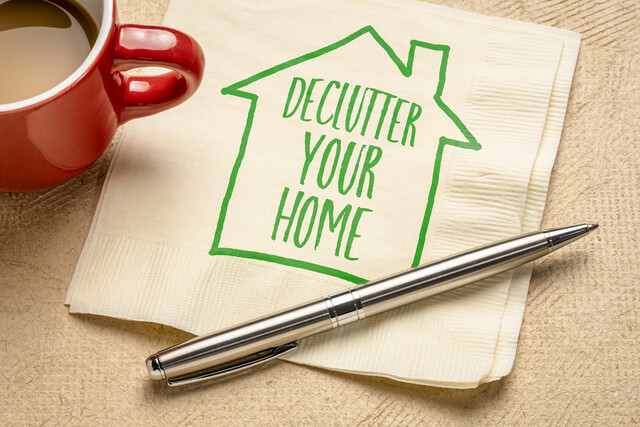Discussions surrounding communities and community development in recent years have seen an increase in chatter regarding sustainability. It's an effort to take into account future needs and self-reliance as the community as society and the economy change over time. It's also an open and conscious way to address the environmental impact that communities have throughout their lifetimes. The inclusion of the concept in community development has been a great way for communities to learn, implement, and practice sustainability in their daily operations.
This article will look at sustainability and what it can mean for communities when it is instigated through the community development process. Topics will include an explanation of what sustainability entails and what is required for its success in a community setting. Reasons why a community should consider becoming sustainable, the factors involved, and when the best time to begin sustainable practices will also be discussed.
Sustainability is a practice where human needs and actions are addressed in a way that is environmentally friendly and stable.1 It's behaviors and actions that takes into account the effects individual actions have on the world and society as a whole and towards future generations. Many people already have become more mindful of their actions and how they can be more sustainable for their benefit and the benefit of those around them. Known data about the impact that many human practices regarding consumption and industrialization-which have not slowed down for the last century or two-has prompted concern about what will happen if things do not change soon.
Many communities around the world have chosen to practice sustainable development, which is an offshoot of the standard community development process that takes into account issues of sustainability economically, socially, and environmentally in the community. The process basically addresses the community's current and future needs for long-term, sustainable development that is not going to compromise later generations.2 Some may view it as rationing resources, but it is closer to taking pre-emptive steps to not compromise the availability and quality of a community's resources. Communities that 'go green' by practicing sustainability and/or sustainable development tend to see noticeable improvements in the lives of their members and in their ability to be independent.
Why Should Communities Consider Being Sustainable?
There's quite a bit of allure for communities and individuals to practice more sustainable actions and behaviors. The advantages seem to greatly outweigh the disadvantages; time and initial costs are the biggest downsides to sustainable practices, as it's not going to be something that has an immediate benefit.3 The initial transition can be a bit jarring as well, which can make some regret or reconsider making such a change until they properly adjust. As with anything, sustainability can be mishandled and have the opposite effect of what was originally intended-communities should thoroughly research and educate themselves about what sustainable practices are going to work best in their situation.
Proper execution of sustainability can generate loads of benefits, including the following:
- Reduced Costs-Over time, the standard operating costs that a community has will slowly decrease. Many of the actions that sustainability prompts extend the lifespan of resources and reduces the dependence on outside sources, so there's less time and money being spent on restocking supplies. This can cause a community to be more financially stable and independent, which can help boost local economies and spending waste.4 Community members will often be under less financial strain through sustainability, as there's less pressure or need for things like property taxes to offset community spending. With the fluctuations in the national and global economy, this can help ensure the financial survival of the community in times of economic downturn, prompt growth, and help reduce poverty.
- Better Work-Life Trade-Offs-The economic value and cost-effectiveness typically means that there is less strain on each individual household in the community. Things like housing, transportation, and energy tend to become more affordable through sustainability, which means there is less of a need for long hours at work or overtime just to make ends meet. People can spend less time stressing about their jobs or paycheck and can live and enjoy their lives. The happiness of residents is going to impact other parts of the community, as bonds between family and peers strengthen. An improved work-life trade-off also means that people will have more free time, which helps community engagement and participation rates.
- Public Use Efficiency-Sustainability makes it so the public services and features of the community are easily accessible to members.5 The placement of public facilities, like parks and libraries, tend to be done in such a way that distance isn't an obstacle and where they will get the most use. Public transportation systems, even something as simple as a shared-ride program, tend to be made available and can assist in overcoming access difficulties for residents. The quality of these things also tends to be better-sustainable practices helps with their maintenance and aesthetic appeal. Reduced costs to residents for usage of these services can occur when their usage increases, and can off-set any costs associated with their operation.
- Reduced Environmental Impact-The main reason why sustainability is implemented in the first place: it's eco-friendly. The entire purpose of sustainable practice is to reduce waste, consumption of resources, and limit the damaging effects people have on the environment.6 There's less of a negative impact on environmental resources like water and plants, which helps ensure their continued usability in the community and avoids the development of crises due to lack of those resources (e.g. drought, contamination, etc.). People are using less damaging resources like coal and oil/gasoline, which reduces harmful emissions that can cause continued damage to the environment and to people's health. Such is the appeal of green, sustainable living.
- Energy Efficiency-Environmentally-friendly energy sources and management tend to lead to better energy efficiency in communities. The per capita energy consumption rate decreases for public services, who may use conservational practices to reduce energy usage-turning off lights when not in use, energy-efficient products, and alternative energy means (e.g. water or solar energy).7 Community residents can practice energy efficiency in their own homes and community leaders may even want to offer educational resources to help people get started. Reductions in the amount of waste heading to landfills also means there's less energy being used to process and transport trash, which can add to energy efficiency. This can also be a contributor towards cost reduction, as energy bills stay low when usage is kept low.
- Community Aesthetics-Due to the changes made to improve things in the community, sustainability makes communities physically look good. Thriving environmental features like trees and other plant life generate a visual aesthetic in addition to clean air. Green spaces in urban areas also tend to have many mental, emotional, and physical health benefits like reducing stress levels.8 Sustainability-generated aesthetics can help build up a community's character and improve its public reputation. While some may think it's shallow, but the physical appearance of a community can lead to its members having more pride and interest in its well-being. The beauty of the space around them will make them want to live there and take care of it.
- Tourism Boosts-Multiple other effects of community sustainability can help increase a community's tourism. Aesthetic changes catch the attention of potential visitors through the reputation the area has. The economic stability means that there is often enough variety to attract lodging, entertainment, and other tourism-based facets in a community. The diversity in the economy will also be able to sustain businesses associated with the community's tourism industry.9 Public services can also attract tourists, such as state and local parks and community cultural events. In some cases, a community that has successful sustainability practices has an educational tourism appeal; other communities that want to become sustainable will often check out their peers as an example and a way to learn for themselves.10
Is There A Specific Time Frame To Begin Sustainable Practices?
When a community has decided that they want to reap the rewards of sustainability development, there is often a question of when it should be done in order to be successful. Are they too set in their ways to make such a significant change? Is it too late to reduce their environmental impact? Is the damage already too great to reverse? The fact of the matter is that there is never a wrong time to begin using sustainable practices. It can be done by anyone, at any time they so choose. The only factors that may impede the implementation of sustainability in a community is the gathering of resources and planning.
Communities may want to set a particular start time for their sustainable practices for the sake of making the transition smoother for everyone involved. This can give them time to prepare and make arrangements for any work that needs to be done to alert community members to the changes. A community may also want to consider using up their existing non-sustainable resources rather than tossing them, which can delay the implementation of sustainable practices. Wasting resources, even those that are not eco-friendly to begin with, is rather counterintuitive towards what the community is trying to accomplish by being sustainable.
The Factors To Consider
A community that is considering sustainable community development has a few things that they need to look at first. As with any version of the community development process, you need to know what it is that needs to be addressed within the community and what factors are going to impact your actions. Some of those factors include:
- Available Resources-As mentioned above, you don't want to waste existing resources during the transition to sustainability as it's not going to help and may increase the initial starting costs. Communities may have resources that are already eco-friendly and/or can be used in a sustainable way. It can help leaders and organizers identify what does or doesn't need to be modified and what replacement options will work. Evaluation of available resources in a community is also one of the early steps in the community development process, and it can help with the planning stages later on.
- Financial Responsibilities-Communities that are seeking to use sustainability development to stabilize their economy and save money may have some existing financial constraints and responsibilities. There are facets of the economy that are not sustainable, like certain jobs and industries, that get left behind when a community moves towards sustainable practices.11 These existing financial responsibilities need to be taken into consideration so that the community isn't starting out its new sustainable life with a massive bill and potentially crippling financial damage. Large scale sustainable improvements might also not be doable based on the community's existing budget, so it's best to understand where the community stands financially in order to make sure that it can handle the costs of the transition.
- Growth And Maintenance-When it first starts out, sustainable development needs to be maintained so it can become rooted in the community's habits. It takes time to get it going and for it to have any real effect. Communities need to be able to foster that growth and maintain it in the early stages; if they can't then it's not going to work as well as they want it to. Participation in the process, in this case, is exceedingly vital to the success of the development plans and goals. Once sustainable practices gain momentum in a community and become self-sustaining, they will only need the occasionally maintenance to keep them going.
- Unexpected Circumstances-The best intentions can go awry fairly easily when the unexpected occurs. Communities can plan out every detail but that doesn't mean that something isn't going to happen that puts a stop or kink in the process. Disaster events are just one example of unexpected circumstances that can arise and derail sustainability development plans. Since the early stages are crucial and most communities are still adjusting to new practices and policies, anything that happens that interrupts that fledgling development. It's a significant risk and many fail to take it into consideration.
























